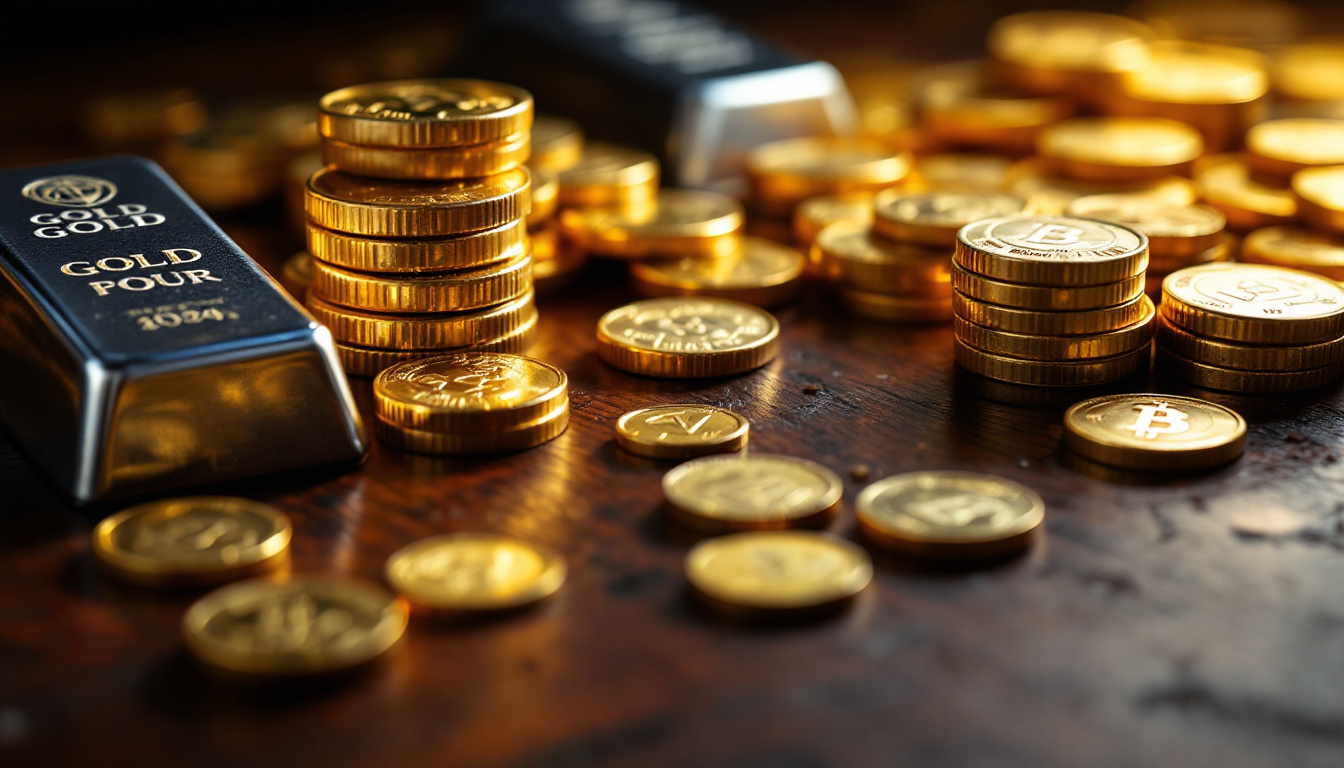What Is Silver Squeeze 2.0 and Why Is It Happening in 2025?
The financial world is buzzing with anticipation as a new movement dubbed "Silver Squeeze 2.0" gains momentum across social media platforms, particularly on X (formerly Twitter). This coordinated effort to drive up silver prices by creating intense demand pressure has set March 31st, 2025, as its target date, with early price movements already being observed in the precious metals markets.
Unlike its predecessor in 2021, which originated on Reddit's WallStreetBets forum, this new squeeze has been meticulously organized by a growing community of silver enthusiasts and financial freedom advocates on X. The movement has already attracted hundreds of thousands of participants who are committed to purchasing physical silver on or before the designated date.
"What we're seeing is fundamentally different from 2021," explains David Morgan of the Morgan Report, a respected voice in silver markets. "The participants are more sophisticated, patient, and understand the structural deficiencies in the silver market far better than the previous wave of retail investors."
The timeline leading to March 31st, 2025, has been marked by several strategic phases. Beginning in late 2024, organizers started educating followers about silver's unique market characteristics, including its relatively small market size compared to gold and its dual role as both a monetary and industrial metal. By January 2025, the movement had established clear objectives and actionable steps for participants, creating a more organized approach than the somewhat spontaneous 2021 effort.
How Does the 2025 Silver Squeeze Compare to the 2021 Attempt?
The 2021 silver squeeze, while generating significant media attention and temporarily driving up physical silver premiums, ultimately failed to achieve sustained price increases. Several key differences make the 2025 effort potentially more impactful.
First, market conditions have shifted dramatically. In 2021, the Federal Reserve was still in accommodative mode, whereas 2025 sees the central bank potentially pivoting to a more dovish stance after a restrictive period. This monetary environment is historically more favorable for precious metals.
Second, the organizing platform has changed significantly. While Reddit provided a concentrated but somewhat isolated community in 2021, X offers broader reach and more diverse participation, including institutional investors and industry insiders who were largely absent from the previous attempt.
"The 2021 squeeze fizzled because it lacked staying power and faced institutional resistance," notes a prominent silver analyst. "This time, we're seeing stronger hands holding physical metal, and importantly, a much stronger foundation of knowledge about the silver market's vulnerabilities."
Current metrics suggest the 2025 squeeze is attracting approximately three times the number of active participants compared to 2021, with many committing to substantially larger purchases. Furthermore, lessons learned from the previous attempt have led to greater emphasis on acquiring physical silver rather than paper derivatives, which many believe contributed to the 2021 effort's limited impact.
What Factors Are Driving Precious Metals Markets in 2025?
Gold's performance has been nothing short of spectacular, nearly touching $3,060 per ounce in recent trading – a historical record that has emboldened silver investors. This gold rally has been fueled by continuing geopolitical tensions, particularly in Eastern Europe and the Middle East, pushing traditional safe-haven assets to new heights.
Central bank buying patterns have shifted significantly, with many nations aggressively adding to their precious metals reserves. According to recent data, central banks collectively purchased over 1,250 tonnes of gold in 2024, continuing a trend that began accelerating in 2022. This unprecedented accumulation has spillover effects on silver, which is increasingly viewed as an undervalued monetary metal.
Industrial demand for silver has exploded in 2025, driven primarily by the green energy transition and advanced electronics. Solar panel manufacturing alone is projected to consume over 160 million ounces of silver this year, while electric vehicles and 5G infrastructure continue to increase their silver component requirements. This industrial demand creates a fundamental floor for silver prices that didn't exist to the same degree in previous market cycles.
The gold-to-silver ratio, a key metric for precious metals investors, has been gradually compressing from its peak of nearly 100:1 during the 2020 pandemic crisis to around 65:1 in early 2025. Historical patterns suggest further compression may occur, potentially driving silver to outperform gold in percentage terms if the ratio reverts toward its long-term average of approximately 55:1.
How Are Tariffs Affecting Silver and Other Metals?
The implementation of Trump's policies reshaping global commodity markets through 25% tariffs on automobile imports, effective April 3rd, 2025, has created ripple effects throughout industrial metals markets, including silver. These tariffs, coupled with ongoing investigations into potential silver tariffs due to its critical industrial applications, have created supply uncertainties that market participants are factoring into their forecasts.
Dana Samuelson of American Gold Exchange explains: "Tariffs create artificial supply constraints in metals markets, often driving prices higher in the short term while disrupting traditional supply chains. For silver, which crosses borders multiple times during various refining and manufacturing processes, these tariffs could significantly impact available supply for both industrial and investment purposes."
Copper has already responded dramatically to tariff investigations, recently hitting an all-time high on COMEX of $5.52 per pound. This surge in copper prices often precedes silver movements, as both metals share industrial applications and are sometimes mined together.
A notable divergence has emerged between London and New York metal prices, with COMEX futures sometimes trading at significant premiums to London spot prices. This unusual spread suggests potential stresses in the physical delivery systems that underpin metals markets – precisely the vulnerability that Silver Squeeze 2.0 aims to exploit.
What Role Is the Federal Reserve Playing in Precious Metals Markets?
The Federal Reserve's monetary policy stance remains a critical driver for precious metals. Despite earlier projections of multiple rate cuts in 2025, the Fed has maintained rates while projecting only two potential cuts this year, citing persistent inflation concerns. This cautious approach has created a unique environment where precious metals are performing well despite relatively high real interest rates.
Danielle DiMartino Booth, a former Fed advisor, has predicted 4-5 potential rate cuts might ultimately be necessary in 2025, significantly more than the Fed's current projections. "The labor market is showing signs of stress beyond what the headline unemployment figures suggest," Booth explains. "The Fed may be forced to pivot more aggressively than they're currently indicating."
With unemployment approaching the Fed's projected year-end target of 4.4%, pressure is mounting for more accommodative policy. Recent Personal Consumption Expenditures (PCE) data – the Fed's preferred inflation gauge – has shown moderation, potentially providing cover for rate cuts in the latter half of 2025.
This monetary policy environment is gradually shifting toward conditions that traditionally benefit precious metals. As real rates potentially decline, the opportunity cost of holding non-yielding assets like silver decreases, typically driving investment demand higher – a factor that could amplify the impact of Silver Squeeze 2.0.
Why Is Silver Known for Volatile Price Movements?
Silver's reputation for extreme price volatility stems from several structural market characteristics that make it uniquely susceptible to sudden moves, particularly during coordinated buying or selling pressure.
Most critically, the silver market is tiny compared to gold. With an annual investment market of approximately $25 billion versus gold's $180 billion, it takes far less capital to influence silver prices. This size disparity means that when investment flows shift toward silver, the price impact can be dramatically amplified.
Silver's dual role as both a monetary and industrial metal creates competing demand factors that can cause price disruptions. During economic expansions, industrial demand supports prices, while during contractions, monetary demand often takes precedence. This duality sometimes creates conflicting price signals that lead to heightened volatility.
"Silver is like gold on steroids," explains a veteran precious metals trader. "When gold moves 1%, silver often moves 2-3% in the same direction. But what many don't realize is that silver's below-ground supply ratio to gold is only about 8:1, while the price ratio has averaged around 65:1 recently – this fundamental disconnect creates the potential for explosive moves when market sentiment shifts."
Historical patterns show silver frequently experiencing prolonged consolidation phases followed by rapid breakouts. The metal's last major bull market run saw prices increase nearly tenfold from 2008 lows of $8.40 to nearly $50 in April 2011. These historical precedents of explosive moves provide context for why Silver Squeeze 2.0 participants believe coordinated buying could trigger outsized price reactions.
How Can Investors Prepare for Silver Squeeze 2.0?
For investors considering participation in the 2025 Silver Squeeze, the distinction between physical silver and paper derivatives represents a crucial decision point. Physical holdings – including coins, bars, and allocated storage – provide direct exposure to the metal without counterparty risk, but typically involve higher premiums and storage considerations.
"Paper silver" investments like ETFs, futures, and mining stocks offer greater liquidity and convenience, but may not transmit the same price pressure to underlying physical markets that squeeze organizers are targeting. Many participants in Silver Squeeze 2.0 advocate for physical possession specifically to remove metal from available market inventories.
Key price levels to watch include the psychologically important $30 mark, which has acted as significant resistance since 2013, and the all-time high near $50, established in both 1980 and 2011. Technical analysts suggest that sustained trading above $30 could accelerate momentum toward the $35-40 range, potentially setting the stage for a challenge of previous records.
Risk management remains essential given silver's volatility. Position sizing should reflect the metal's potential for dramatic price swings, with many advisors suggesting limiting silver exposure to 5-15% of an investment portfolio. Gradually building positions through dollar-cost averaging can help mitigate timing risks.
Looking beyond the squeeze event itself, the long-term outlook for silver appears supported by structural factors including growing industrial applications, declining mine supply, and increasing investment demand as a monetary alternative. These fundamentals suggest that even if the squeeze itself produces only temporary price effects, the broader silver thesis may remain intact.
FAQs About the 2025 Silver Squeeze
What exactly is a "silver squeeze" and how does it work?
A silver squeeze represents a coordinated effort by investors to purchase physical silver in sufficient quantities to create supply shortages in available inventories, theoretically forcing prices higher as industrial users and institutional players compete for remaining supply. The mechanics rely on silver's relatively small market size and the physical delivery constraints of a commodity that, unlike purely financial assets, must be physically refined, transported, and stored.
Who are the key influencers behind Silver Squeeze 2.0?
While remaining somewhat decentralized, Silver Squeeze 2.0 has emerged through a network of influential precious metals commentators, alternative financial analysts, and retail investor communities on X. Unlike the 2021 effort, which was largely anonymous, several recognized silver market analysts have publicly supported the 2025 initiative, lending it additional credibility among traditional investors.
What happened to silver prices during the 2021 squeeze?
The 2021 squeeze initially drove spot silver from approximately $25 to $30 per ounce within days, while premiums on physical products like American Silver Eagles soared to over 30% above spot prices. However, the price impact proved temporary, with silver retreating below $25 within weeks as momentum faded and institutional selling met retail buying pressure.
How might mining stocks be affected by the squeeze?
Silver mining equities typically provide leveraged exposure to metal price movements, often amplifying silver's performance by 2-3 times in both directions. During the 2021 episode, many silver miners saw 20-30% price increases even though spot silver only moved about 15% higher. Pure-play silver producers with high production margins and strong balance sheets tend to demonstrate the highest beta to silver price movements during such episodes. For those interested in this sector, a beginner's guide to investing in mining stocks can provide valuable insights.
What are realistic price targets for silver if the squeeze succeeds?
Predictions vary widely, with conservative analysts suggesting a move to the $35-40 range as a reasonable target if the squeeze generates sustained momentum. More optimistic projections cite silver's all-time high near $50 as a potential objective. The most bullish voices in the silver community point to inflation-adjusted previous highs exceeding $120 in today's dollars as the ultimate potential, though most market observers consider such targets highly speculative without fundamental changes to the global monetary system.
Investors should also consider how US Fed rate decisions influence precious metals and monitor current gold price trends and market analysis for additional context. Furthermore, those looking at smaller companies in this sector might benefit from navigating junior mining investment strategies, as these stocks often experience the most dramatic moves during silver market events.
Ready to Invest in the Next Major Mineral Discovery?
Stay ahead of the market with real-time alerts on significant ASX mineral discoveries through Discovery Alert's proprietary Discovery IQ model, which turns complex mineral data into actionable insights. Visit Discovery Alert's dedicated discoveries page to understand why historic discoveries like those mentioned in this article can generate substantial returns, and begin your 30-day free trial today.




